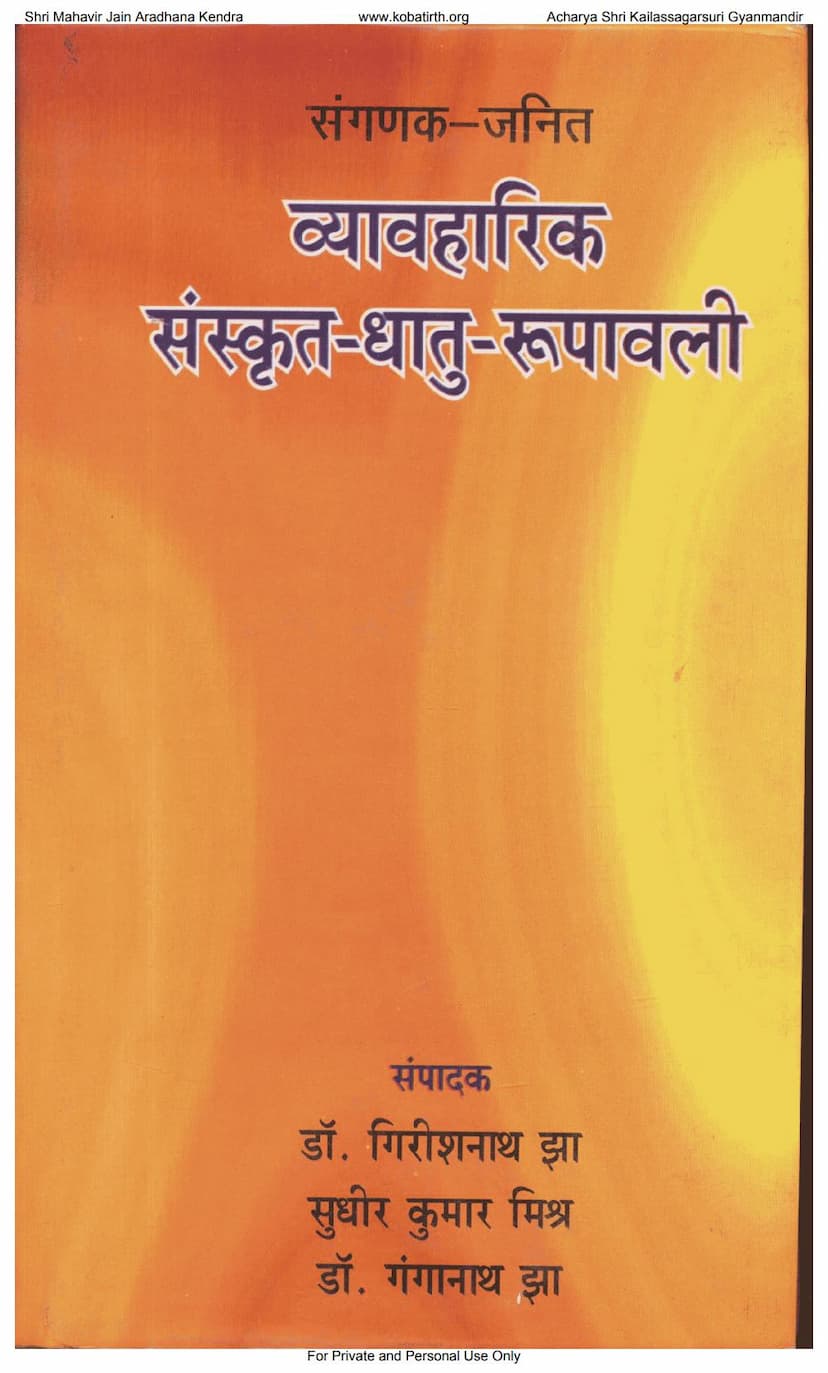Vyavaharik Sanskrit Dhatu Rupavali
Added to library: September 2, 2025
Loading image...

Summary
This document is the "Vyavaharik Sanskrit Dhatu Rupavali" (व्यावहारिक संस्कृत धातु-रूपावली), a Sanskrit grammar book focusing on verb conjugations (dhatu roop), compiled by Girishnath Jha, Sudhirkumar Mishra, and Ganganath Jha. Published by Vidyanidhi Prakashan, Delhi, in 2007, it aims to be a practical guide to Sanskrit verbs.
Key aspects highlighted in the text:
- Computational Linguistics Focus: The preface emphasizes the role of computational linguistics and the need for a database of Sanskrit roots (dhatus) and their conjugations for research. The project originated from M.A. students creating databases as small projects, which were later refined by M.Phil. students. The editors undertook the task of building a comprehensive database using Java and MS SQL Server.
- Practical Selection of Roots: The book acknowledges the variations and uncertainties in the number of Sanskrit roots across different grammatical traditions (like Siddhanta Kaumudi and Paninian Studies). To ensure practicality, the selection of 438 commonly used roots is based on a Sanskrit corpus and secular texts analyzed within the computational Sanskrit department of Jawaharlal Nehru University (JNU). The editors recognize that this practical approach might lead to differing opinions regarding the selection and interpretation of roots.
- Content: The book presents the conjugations of Sanskrit verbs (dhatus) across various tenses and moods, categorized by root meaning, grammatical family (gana), and transitivity (sakaraka, akarmaka, dvikarmaka). It also includes the associated meanings from Siddhanta Kaumudi.
- Accessibility: While a Java-based web database of these conjugations is available on the JNU computational Sanskrit website (http.sanskrit.jnu.ac.in), the book was published because internet access is not universally available.
- Acknowledgements: The editors express gratitude for the encouragement and blessings received from professors at JNU and acknowledge the efforts of students involved in the project.
In essence, this book is a systematic compilation of Sanskrit verb conjugations, created with a modern, computationally-informed approach, aiming to provide a practical and accessible resource for students and researchers of Sanskrit.